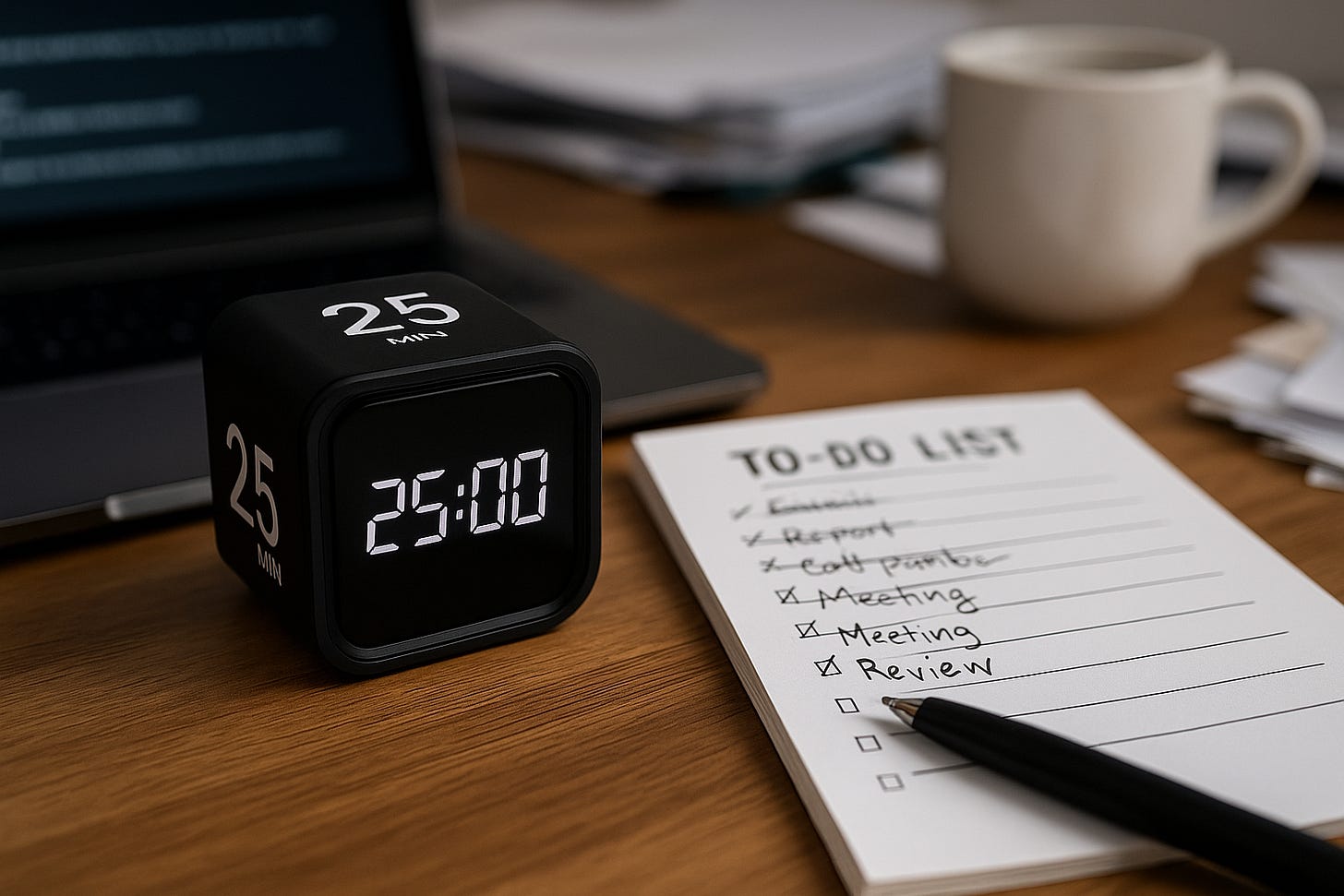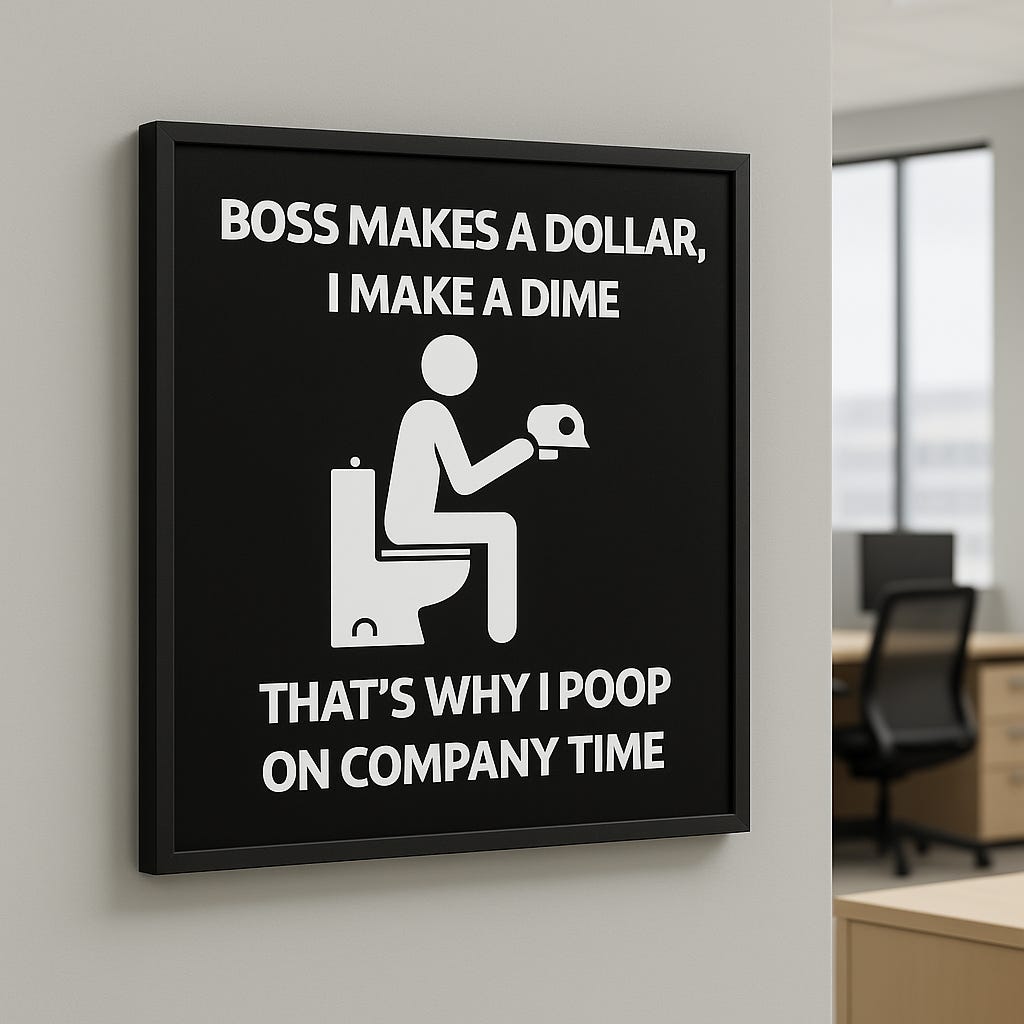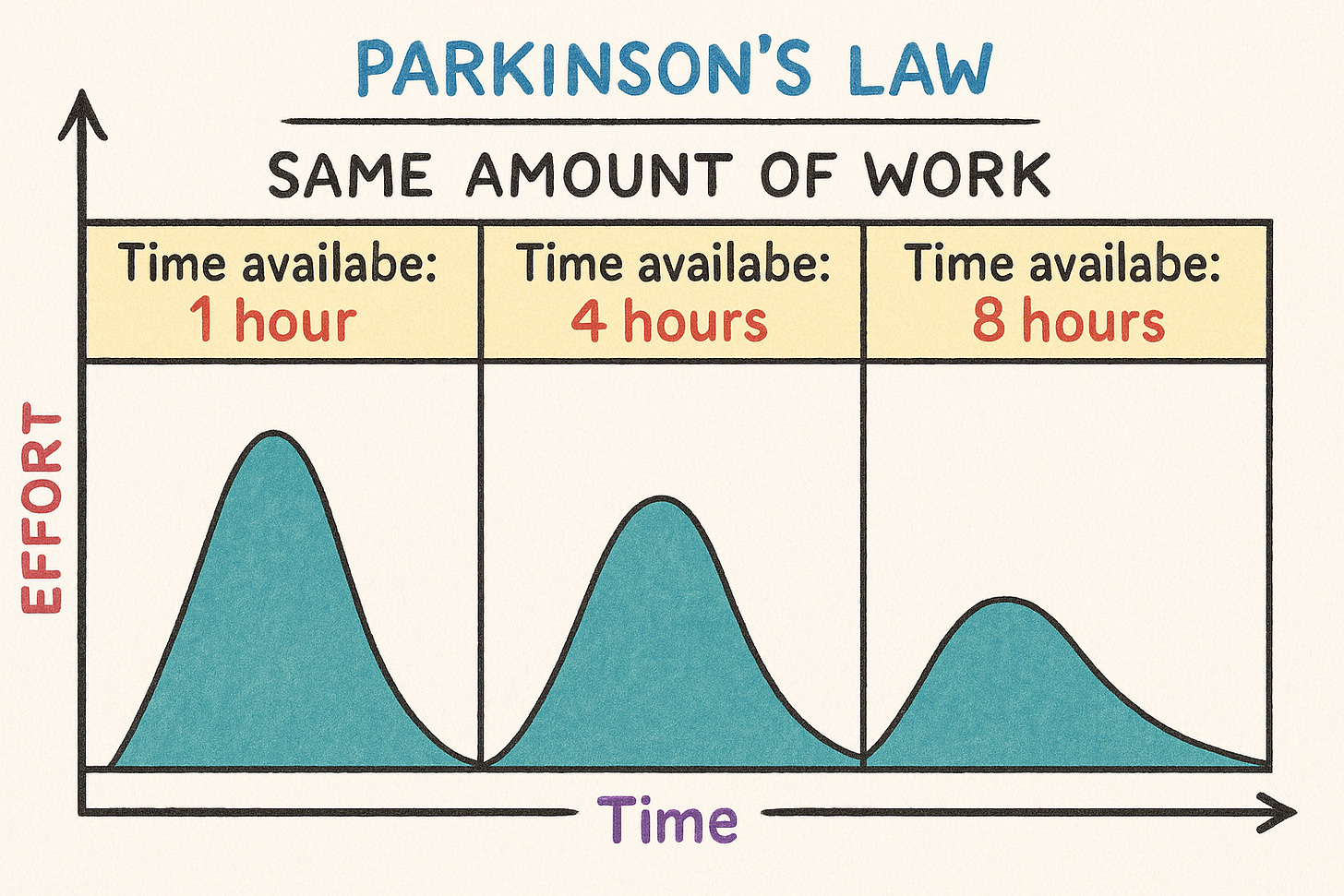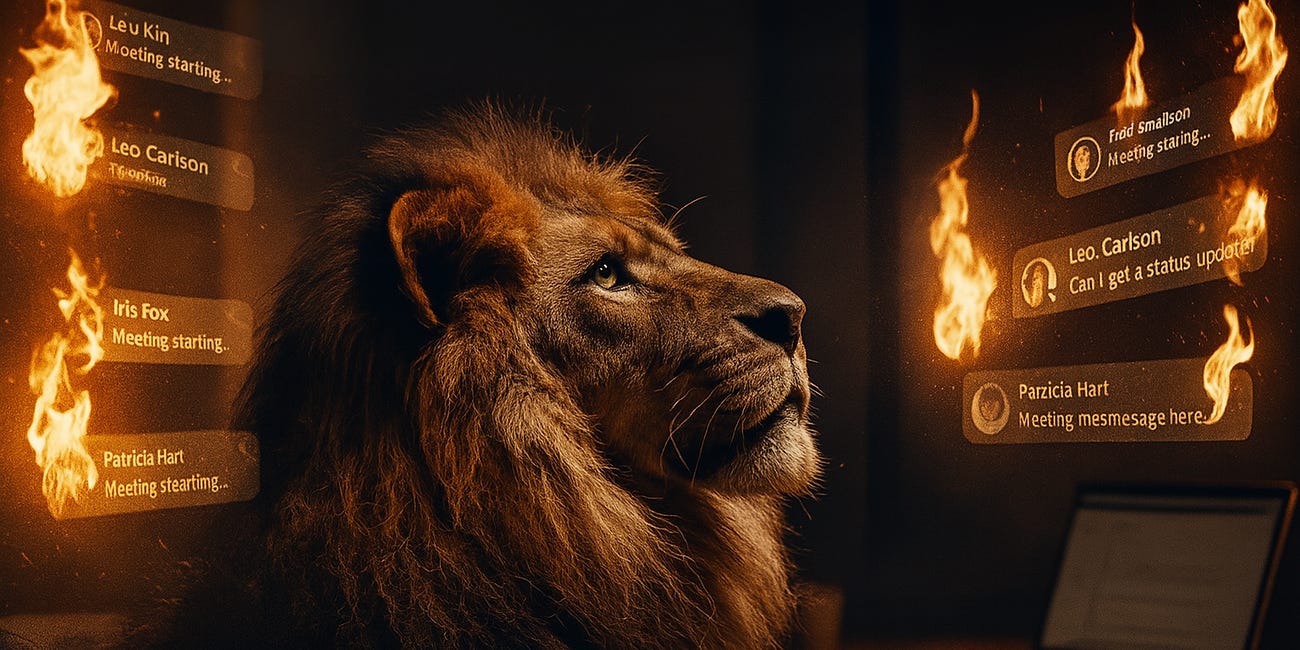How I Cut My Workday in Half Without Losing Quality (You Can Too!)
The Parkinson’s Law Principle That Changed Everything
Work always takes as long as you let it.
Is this familiar? You start the day with a large list of tasks. Midday hits and you’re still working on the first item.
Until recently, this was my life.
Reason? I started with the top priority task and never set a time limit.
I silently gave myself permission to add bloat to the project.
Before I realized it, that one hour task ballooned into three hours, leaving me less time for my other to-dos. I was stuck working late or not finishing everything that needed to get done.
You feel drained.
Your evening is shot because you lost control of your morning.
This changed when I applied Parkinson’s law—giving myself less time to complete a task rather than more.
Why Common Wisdom Fails
The common solution is to give yourself more time.
“Take the time you estimate it will take to complete the project, then double it.”
Expert wisdom, right?
That may work if you’re negotiate a government contract and your goal is to collect money for surfing the internet, but is that how you want your personal life to operate? Built-in inefficiency?
Think of it this way: Your employer assumes it will take you 40 hours per week to do your job.
But how much time do you spend on extracurricular activities during the week?
This popular image is funny, but it’s true in so many more ways. You are given 40 hours to complete a task, and so you take 40 hours. Your mind knows it has a LOT of time, so it wanders. You find a million ways to get side-tracked.
When the deadline approaches to deliver, you scramble and complete the job with seconds to spare.
The countdown of the clock created focus.
Consider: Is this the model you want for your personal or entrepreneurial endeavors?
32-Hour Workweeks
Recently, European companies have trialed a 4-day work week.
100% pay for 80% of the time.
The results are astonishing:
Productivity remained stable or improved
Revenue increased
Lower turnover rates and fewer sick days
As a manager, I can relate. My company removed PTO from manager and above positions. We have a job to do and when we need to take time off, we’re responsible to ensure it’s covered in our absence.
Recently, I took a 4-day weekend. That meant for the two weeks, I had to complete a week’s worth of work in four days instead of five.
Crazy thing—I was more productive those two weeks than normal.
Shorter deadlines create clarity. They breed focus.
So why do we fall into this trap?
Parkinson’s Law
Work expands to fill the time available for its completion.
Some British bloke named Cyril Parkinson wrote this in 1955, intending to mock bureaucratic inefficiencies.
In addition to the solid jab, he also stumbled onto solid gold.
This law is a keystone of productivity and time management. Most people have never heard of it. It’s a game-changer.
Here’s the basics:
Give yourself more time to complete a task and the task will likely take all the time, even if it could have been completed sooner.
Give yourself less time to compete a task and you’ll focus only on what is vital, completing the task in the shortened amount of time.
You focus only on what delivers value and remove all the fluff.
Think emails. How many times have you spent 15-30 minutes stressing about the contents of your email? You worry about the opener, the formatting, the ask.
Harsh truth: The recipients will spend 30 seconds or less reading it.
They’ll skim the niceties. They’ll ignore formatting. That dense paragraph you worked so hard on to pack with meaningful information—they won’t even read it.
Want a quick win on your email inbox? Give yourself no more than 3 minutes to write or respond to any email.
Type your thoughts out. Use bullet points. 1-3 sentence paragraphs (copy my writing style). Hit send.
Quit overthinking things.
What About Quality?
I can already hear your objections.
You show pride in your work. You want to wow your audience. I get it.
Here’s another harsh truth: Every “yes” to perfection is a “no” to progress somewhere else.1
To determine if it’s worth the cost, ask yourself if the quality you are pursuing is something your audience needs or something you need to give them.
Consider: Some film companies boast about their 4k content. Do you care about 4k content when you’re mainly streaming the video to your phone?
Deliver what matters.
Use the Pareto Principle. What is the 20% I can do to deliver 80% of the value. Focus only on that for your shortened burst of productivity.
When Quality Matters
Quality does matter when gathering information.
Giving yourself a bit more time to explore with curiosity can make a huge impact on the output.
It’s like a photographer searching for the perfect shot. You start fully zoomed out to take in as much information as possible. Exploring the landscape with a curious eye.
Once you find the interesting subject, zoom in to maximize the bokeh effect—that camera effect that blurs everything else out but the subject.
When I produce a video teaching, I use a similar process.
Study a breadth of information on and adjacent to the topic
Cut 80% of the material to focus on the 20% that impacts my audience
Record in 4k to capture maximum details
Compress to 1080p to maximize deliverability
High quality inputs + compression = maximum value.
You can still apply Parkinson’s law to gathering quality information by setting a time limit for each research session.
This forces you to focus on the information that brings value and reduces going down rabbit trails.
Take Back Your Time
I’ve put Parkinson’s law into action in my life with some amazing results.
If you want to reclaim your time and sanity, here how:
Pick one task and give yourself a hard time limit
Use standard time blocks—25 or 55 minutes.
Use a visible timer—keep the time crunch forefront in your mind.
When the time is up, hard stop. No exceptions
Take a break—use the free time to recalibrate.
Applying this to only a few tasks allows you to learn the system and adjust it to your personal needs.
Try out various blocks of time, but find a standard block that works. Use the time between tasks to stretch, walk, or another activity that gives your brain a break from the mental burden.
You can use anything as a timer, but to level up, download a Pomodoro timer app or buy a Pomodoro cube (my personal choice).
When the timer goes off—STOP. Don’t work past the end time. Stop mid-sentence if you’re writing an article. You can come back later in another time block.
You’re rewiring your brain for efficiency.
You’ll quickly get to the point where you will be finished just before the timer ends. Your mind naturally adjusts the flow of work to meet the time requirements.
Adjust as Necessary
Getting the timing right is an art, especially when producing something for an audience.
When I speak to audiences, I’m often given a different time limit to present the same subject. Often 30, 60, or 90 minutes. I naturally adjust to fill the time, but I’ve generally found that the 30 minute presentations garner far more praise than the longer sessions.
To apply this to your work, try an A/B test.
Give yourself 60 minutes for the task. Next time, give yourself 30 minutes. As for feedback. See which version worked best for your audience.
Project estimation experiment
Remember that “wisdom” of doubling the time estimate?
Give your stakeholders the same doubled estimate. Give your team half the time to complete the project.
If they finish in half the time, give them the extra time off.
Then, adjust your future estimates.
Final Thoughts
Stop letting your day get hijacked by perfectionism and distraction.
It just takes a few intentional steps.
Set a timer for your next import task right now.
Beat the clock. Then use the time to do something you actually care about.
Thanks for taking the time to read!
If you enjoyed this article, please do me a huge favor. Share it with just one other person you know who would benefit from it.
If there was a specific part that really connected with you restack it so others can grow too!
How I Killed My Inner People-Pleaser (and Got My Time Back)
Saying “Yes” feels amazing…until you hit the cliff.





